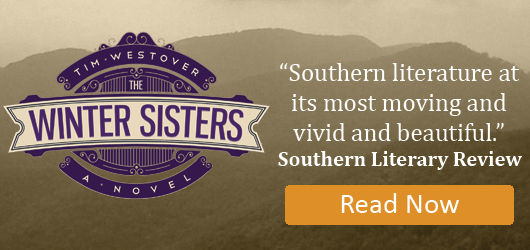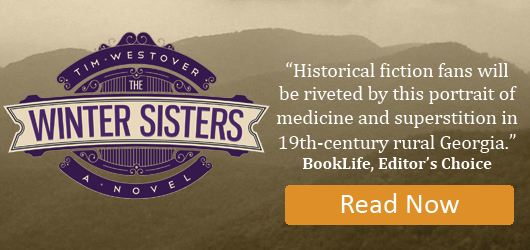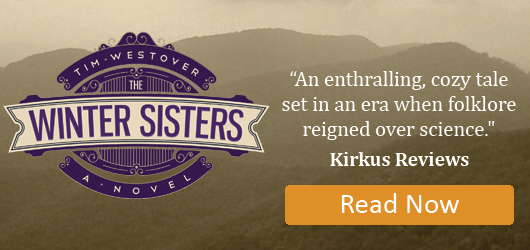Reviewer Karen Rigby Interviews Tim Westhover, Author of The Winter Sisters
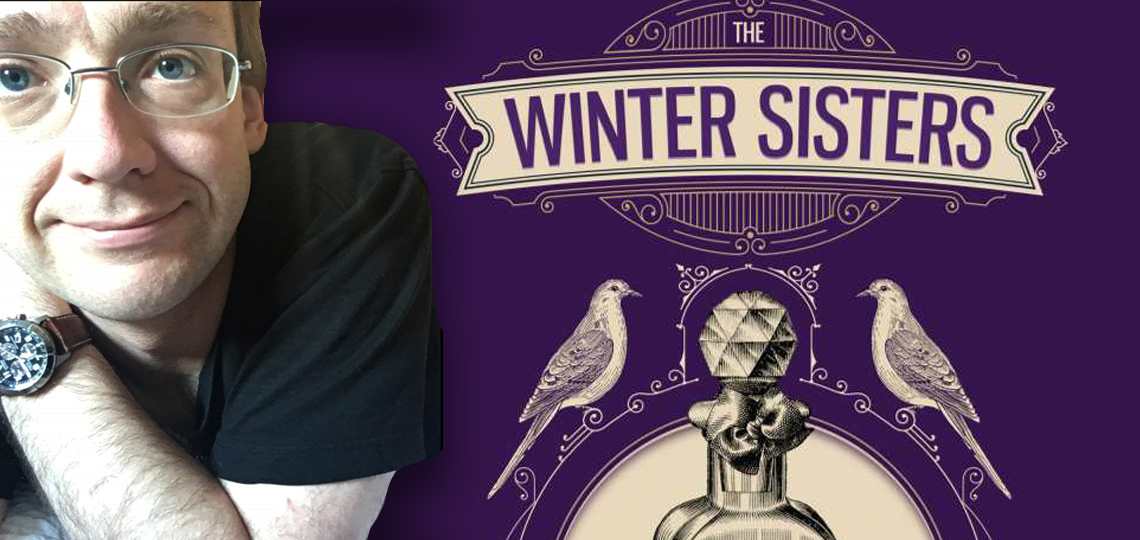
Here at Foreword, we’re great fans of novels that make mischief with current events, especially in sensitive political areas and with factions of society that take themselves too seriously. Under the guise of historical fantasy, The Winter Sisters hits that sweet spot by weaving storylines of science-addled country doctors and good witches, fire-and-brimstone preachers and peculiar quirks of the deep South in the early 1800s. At its heart, the story centers around three sisters, living a quiet, quite normal life even as they practice the healing arts as herbalists.
In her five-star Clarion review, Karen Rigby writes that while the book “pits Hippocratic medicine against folk remedies with tall-tale flair,” amid all the “shenanigans and swirling fears, a witty, tender story arises and unexpected partnerships form.”
As is our way, we couldn’t pass up the opportunity to set up an interview between reviewer and author to learn more about how this spirited novel of Americana came to be.
Karen, you’re on.
The Winter Sisters is an entertaining fantasy on science-based medicine, folk remedies, quackery, and holistic healing. In a time of Covid-19, the tale feels as relevant as ever about people’s fears and intolerance. What can the novel tell us about community and hope?
I think The Winter Sisters is about listening to science—and science isn’t always people in white coats. It’s ordinary people trying their best, learning from each other, learning from the world, learning from nature, discarding what doesn’t work, refining what does work, and not being closed off to any possibility. Some of our best modern medicines come from tree bark and flower petals and horseshoe crabs. We find new antibiotics in Irish graveyard dirt. The strain of penicillin that saved the most lives in World War II was found on a moldy melon in Illinois. Everywhere we look, we find hope, even in the most unlikely places.
Pastor Boatwright rails against charlatans and heretics—what he might dismiss as the fake news of his day, if you’ll allow, even though others around him see proofs. When you create an adversarial figure, do you try to embed a few sympathetic traits when you revise? Do you let the character show you who they are?
I have an allergy to purely evil characters: there are few purely evil people in the world. Every character works from his own motivations of what he or she thinks is best. A great adversary is one that could have his or her own novel, but from the upside-down, in which he’s the hero. I don’t think you need to sprinkle in sympathetic traits or a pitiable backstory. You need a well-drawn, fully realized character, whose motivations have an internal logic.
It’s intriguing, and alarming that the pastor thinks he’s acting for the good of his flock. When this kind of patriarchal concern warps into something more harmful, can we ever get back to a place where we don’t lose sight of really listening to each other?
No, not easily. It’s a story repeated over and over. “Let’s take care of these poor savage natives. Let’s take care of these wrong-headed revolutionaries. Let’s take care of these little people that can’t take care of themselves.” It removes agency and responsibility and humanity from people who deserve better. And restoring that dignity takes generations, if it ever happens. Humility is the only solution: remembering that everyone is smarter than you in some way.
Dr. Waycross is a curious study—he’s so sure, at first, that he’s landed in a backwoods. Where did you find inspiration for him? How did you strike a balance between his “city-folk” confidence and willingness to be shown a thing or two?
Dr. Waycross is entirely autobiographical, especially his unlikable parts. His story of tempering his “city-folk” confidence with humility and rationality is my own story. When I was younger, I wanted to be anywhere other than the little town I grew up in. But any little town has hidden wonders.
Three’s always been a powerful number. Among a trinity of sisters, each with a specific role, and ranging from otherworldly to more pragmatic, do you have a favorite? Was one sister easier to draw than another?
Rebecca, the eldest, the herbalist, was the easiest to write. But Sarah’s sarcasm, mercurial motivations, and spicy temperament, was the most fun. She was the stick that could poke the sleeping bear in the story: if things seemed like they were getting dull or rote, Sarah could bury someone in a graveyard or hammer some nails through a skull (all authentic Appalachian remedies). Effie was extremely difficult. I wanted her powers to be mysterious and drive an obsession in Waycross, but I didn’t want her to be a manic pixie dream girl, just there to further the male character’s journey. She needed her own life with its own motivations.
Ether frolics, blood-letting, tonics: these old-world practices and ephemera give the book much of its lavish color. When did you first grow interested in medicine and history?
The Crawford Long Museum in Jefferson, GA, with its collection of antique and frightening anesthesia machines, poisonous medicines, and clearly non-sterile surgical instruments, was the place that got me started. Old medical quackery is so outlandish, so full of what seems like obvious lies, that it seems funny now. Could anyone have thought that Kickapoo Indian Sagwa or Grove’s Tasteless Chill Tonic or a tobacco enema would do them any good? But these cures did do some good—whether by the placebo effect or because there was, inside the 80-proof remedy, some actual medicine. What will we think about 20th century medicine in the 22nd century? I’m sure we’ll be astounded that we could have been so stupid and blind, but about what?
If we could see a director’s cut of the novel, are there additional fun facts or lore about Lawrenceville that you unearthed?
The first draft was twice as long as the finished novel. It was overstuffed with every quirky story I could steal from Lawrenceville’s past. One that didn’t make the cut was about fishing in the streets. There’s a historical marker on the courthouse square about citizens protesting the deep puddles on the dirt roads with their fishing poles. I would have liked to have Effie pull up a magical talking fish from the depths of a pothole, or have Sarah throw in some gunpowder and blast the potholes to hell. Also, the first jail was upstairs in the sheriff’s house, and his wife was in charge of discipline and cooking for the inmates. There’s still a story there.
As a Georgia resident now, too, do you find your thinking about and appreciation for the state any different after writing this book?
Writing this novel, and my previous ones, were journeys in appreciating Georgia—but it didn’t have to be Georgia. It was appreciating where you are, wherever that may be. You don’t need to be on safari to find inspiration, stories, intrigue, and mystery. It’s behind the Chili’s, too.
The Winter Sisters
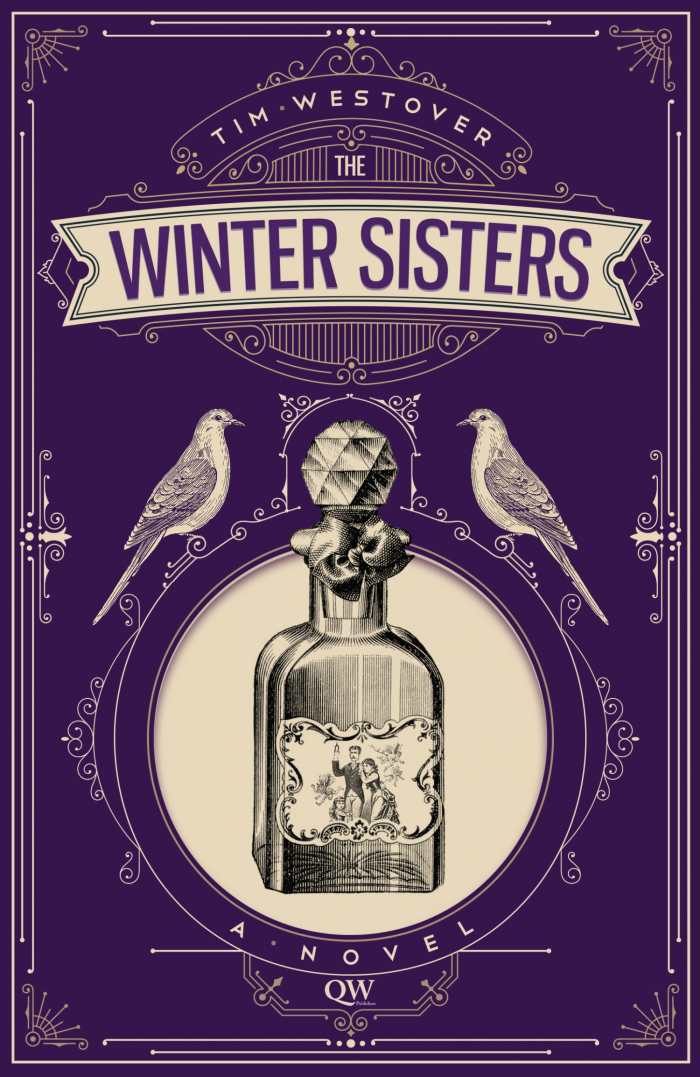
Tim Westover
QW Publishers
Softcover $11.95 (322pp)
978-0-9849748-9-4
Buy: Local Bookstore (Bookshop)
The Winter Sisters is an entertaining historical fantasy in which lives change and minds open.
Tim Westover’s eccentric novel The Winter Sisters, pits Hippocratic medicine against folk remedies with tall-tale flair.
The story is set in Lawrenceville, Georgia—a town it calls a “hog-cursed, mud-soaked, huckster-plagued little hamlet”—in the early nineteenth century. There, a penniless physician, Doctor Waycross, faces rumors of a rabid panther. He forms a tense alliance with a preacher, Boatwright, who thinks that the Winter sisters are witches.
Waycross hopes to convince the townspeople that they need him, but most find him suspect. They prefer the sisters as healers. Meanwhile, a snake-oil salesman hawks useless tonics, and the elusive panther prowls the woods. When events lead to Waycross banding together with the sisters in a makeshift clinic in town, Boatwright’s vitriol intensifies. Later sections draw on Effie Winter’s inexplicable healing power, raising questions about whether or not miracles happen.
Waycross is an original whose initial skepticism, contempt, and pride yield to a softer stance. He can’t abide quackery in others, but lets it slide within himself. Much of the book’s humor stems from the discrepancy between his outlook and what the audience knows—that his belief in the four humors and his go-to solution for everything, bloodletting, are more questionable than the sisters’ herbs and poultices. He learns to appreciate their sometimes unconventional, holistic approach when he sees that they’re effective. How he comes around to changing his views is handled with care.
The writing embodies Waycross’s initial pomposity, employing delightful terms like “prestidigitation” that create an exasperated air around the doctor. There are also humble moments, including an amputation for a patient who may not have needed it. Other characters, including Sarah Winter, are dynamic and contribute levity to the story. Sarah’s penchant for inventing stories to make people feel better comes across as impish and wise.
Care is taken with the scene setting, portraying Lawrenceville as a tight-knit community through character encounters on its main thoroughfare and in its shops. The Winter sisters’ remote cottage is picturesque and surprises Waycross with its normalcy. Amid Lawrenceville’s shenanigans and swirling fears, a witty, tender story arises and unexpected partnerships form. The denouement leaves a few open ends, though, particularly when it comes to Effie Winter.
The Winter Sisters is an entertaining historical fantasy in which lives change and minds open.
KAREN RIGBY (September 11, 2019)
Karen Rigby

